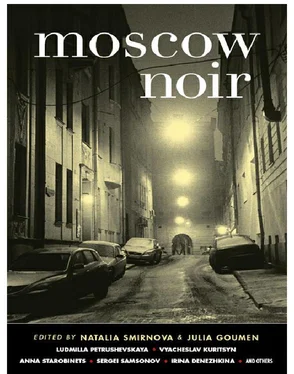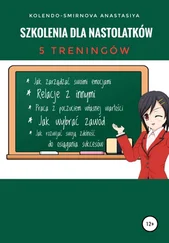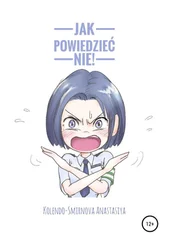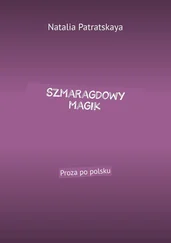“You think Comrade Stalin and Comrade Beria wandered around in these bomb shelters?”
“Well, maybe they didn’t. But all the gray brick houses on all the Peshchanaya streets have these bomb shelters. They were built by German prisoners of war. You know, ‘You bombed ’em, you rebuild ’em.’ They say that in the ’50s, when Khrushchev set them free, they thanked everyone here for giving them the chance to return home with a clean conscience. And Comrade Beria, in addition to being the minister of national security, and then the minister of internal affairs, was also head of the prisoner camps. So it was all under his jurisdiction. The best buildings in Moscow are called Stalin buildings, but they should be called Beria buildings.”
“That’s all well and good,” I said. “Beria and company—very interesting. But are you going to catch the maniac?”
Inspector Bullet sighed and looked at me unsympathetically. “At least the girl is alive. She says when he laid her down on some mossy hill, she changed her mind. And then he asked her to put on white socks, like a schoolgirl. Just like the other maniac. She didn’t like the socks—too dirty. She began to fight him off. That’s it. The case is basically closed. Not gonna dig up anything more on him.”
“A hill… on the edge of Birch Grove Park, right by the concrete fence at Khodynka Field,” I said with sudden clarity. “And who took her there? It was probably him. That’s his place. Or their place? The same place as in 1973? And at first she followed him, as if… as if she were hypnotized. Right. See you, inspector; I’ll be back.”
“Hey, come work in the police force, why don’t you? We really need a shrink in the department,” replied Inspector Bullet.
The girl, Julia, gave me a much warmer welcome than her mother. The mother probably wasn’t too keen on paying me for another session. She just sadly gestured with her hand toward the girl’s room, saying, “Don’t be shocked. Her majesty’s wearing new clothes.”
The red-haired Julia had dyed her hair jet-black and put on black and red lipstick. Metal trinkets of all shapes and sizes dangled from her wrists. A metal cross hung between her large breasts, which were virtually spilling out of her T-shirt, and were spotted with pimples.
“Come to lock me up in the funny farm?” she asked.
“They don’t put goths and heavy metal fans away in mental institutions,” I said. “Now listen carefully, sweetie. Two days ago, a man in an overcoat stinking of dirt cracked open the head of a young woman. The police are looking for him. Do you catch my drift? You have the ass of a grown-up woman and the head of a teenager. And when someone lowers a rock onto a head like that, and the brains begin to—Did you say something?”
In one quick, nervous motion, the gothic Julia lit a cigarette and stuck it to her mouth. Then she took it out, smeared with lipstick, and stared at me silently.
“So I need you to fill me in on some details, here,” I said hastily, before she had quite recovered from the shock. “First, who was leading who? He you, or you him?”
“Him,” she replied immediately. “He took me to the cement fence.”
“You said there was a concrete slab. Was it hard?”
“Don’t worry, it was soft enough for my butt.” She was herself again, the first wave of shock already past. “It was covered with moss or something. It wasn’t concrete, I mean… it was really old, more like a tuft of something in the ground. To the left of the path leading to a hole in the cement fence by Khodynka, the field. So it was real soft. Try it yourself. If you need company, I’ll come with you. Doctors get a discount.”
“One last thing. When you were going there with him, what were you thinking about? What did you feel?”
“What do you think I was thinking about? I was thinking about that ,” said Julia. “I felt a little high. I was like, you know, a little girl. Real curious. Like it was the first time. A big guy with a big thingy.”
“Did you think those thoughts before?”
“I used to do a lot of things before. And now—hello, grown-up world.”
I headed to the concrete fence, behind which the white towers of a whole new residential district, constructed on Khodynka Field in just under a year, soar up to the skies. The tops of the buildings bask in the sunset, and the fresh new walls glow pink, like the Cadillac Hotel. To the left stands the spire of Triumph Palace, the tallest residential building in Europe.
But all that is on the other side of the concrete fence. There, in a forgotten area of the old park, which is essentially a forest, twilight was thickening. An empty bench stood askew (what was it doing there—did someone drag it all the way over from the lane?), and weeds and burdocks grew on the tufty ground. Like gray mushroom caps covered with green mold, and slightly protruding from the ground at about knee height, there were two concrete slabs disappearing into the ground at a slant. A little farther on was another slab, level with the earth around it.
I thought I could make out something resembling small orifices, half covered in earth, by each slab. Passageways that once led down?
The slabs were covered with shards of broken bottles, sausage wrappers, and… a torn piece of foil—a condom wrapper.
So this was the place.
I had nothing more to do there.
Gray haze and a soft path silenced my footsteps. A shaggy dog emerged quietly from the bushes and stared at me with an unblinking, almost human stare, keeping a safe distance. Then it took two steps toward me. My heart fluttered in fear, but the the dog didn’t come any closer.
For two hours I listened to a plump editor from Sokol , the local newspaper. She had suggested I do an interview on the topic of psychiatry, because “we do this with all the prominent people in the district.” Then she talked about those who had died on Khodynka during the coronation of the last czar, when many people were crushed and their bodies were hauled away on carts. About Peshchanaya Square, which was built on a large graveyard for Napoleon’s soldiers. The remains of the French soldiers were taken away, nobody knows where. A similar story about the dead in Bratskoye Cemetery: they were buried during World War I, and their remains were exhumed under Beria and Khrushchev, when the remote suburb of Moscow was turning into a beautiful new residential district. The bunkers on the edge of Khodynka? Those were located in a special area that belonged to the Moscow Military District—part of the defense line at the farthest end of the airbase. Airplanes took off over the heads of soldiers, their propellers droning heavily, and flew further west, to the railroad. Nothing interesting, apart from that. Stories about the living dead from the past? No, no; nothing of that nature. I would have heard. I left the editor and walked home through the empty treelined streets in complete silence, greedily breathing in the fresh air.
Parks built on human bones. Graveyards that no longer exist. An ominous name—Khodynka. More parks, couples with baby carriages, cyclists, poplars, lime trees. Graveyard shadows sleep peacefully among bushes and alleys. Sleep, O souls of long forgotten soldiers. Sleep in the best neighborhood in Moscow. You are welcome here, because all cities stand on the bones of the past. Carts, then hearses, rolled down these streets. These days, from the open balcony doors, you could hear women’s laughter and music, and from the sidewalk you could see the tops of bookshelves and white ceilings with circles of honey-colored lights cast by chandeliers. A cat sat in the window and stared gloomily at the gray concrete below. The cat’s name was Grymzik. He belonged to my neighbor, and I was almost home. And I needed to make an urgent phone call.
Читать дальше












